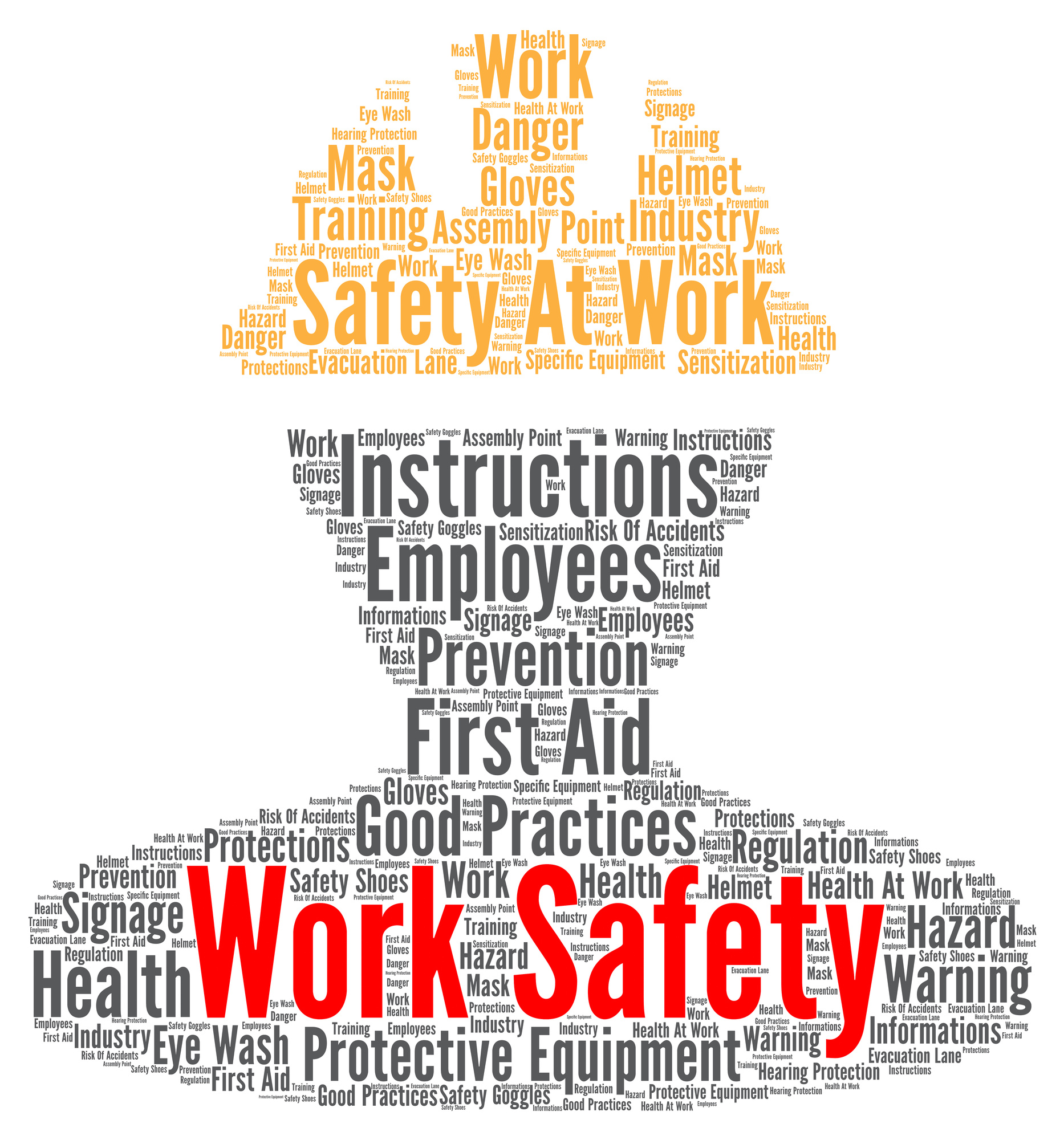Is Your Business Following the Proper Safety Regulations?
No one wants to see the “days since last accident” sign in their workplace reset to zero. It’s demoralizing for workers. It can also make them feel unsafe.
But your workers can never start stacking up safe days without the proper training. And what counts as safe in one workplace may be irrelevant in another.
That’s why you need set clear guidelines for safety in your business. Fortunately, you don’t have to do this on your own. If every business owner had to create safety guidelines from their imaginations, there’d be no industry-wide standards.
So where do you as a business owner go to find the proper safety regulations to enforce in your workplace? You come right here.
We’ve collected some of the most important things you need to know about the law and regulations that govern safety in the workplace, including what they are, who makes them, and what happens if they’re broken.
Read on to find out more.
What’s the Deal With OSHA?
You won’t get far in your investigation of safety regulations without encountering OSHA.
OSHA is the Occupational Safety and Health Administration, a division of the U.S. Department of Labor. Their mission is noble. They believe in providing workers with a safe environment so that they can enjoy the health, opportunity, and security that are parts of achieving the American dream.
In practice, this means OSHA sets regulations employers have to abide by to keep their employees safe.
Here are just a few of the most vital responsibilities OSHA enforces for employers:
- Establish, update, and communicate operating procedures so employees follow health and safety requirements.
- Eliminate serious recognized hazards from the workplace.
- Provide medical exams and training when required.
- Record work-related illnesses and injuries.
- Provide employees access to their medical records.
- Start an Injury and Illness Prevention Program.
- Warn employees of potential hazards by using color coding, labels, signs, and posters.
- Make sure employees have safe and properly maintained equipment to do their jobs.
OSHA is not “for” employees and “against” businesses. The organization works to protect the American workforce.
OSHA provides ample opportunities for education for employees and business owners alike. Small business owners may find OSHA’s Small Business Handbook especially helpful for getting started with OSHA standards.
Common OSHA Pitfalls
Compliance with safety regulations starts with knowing what to look for in your workplace. OSHA publishes a list every year of the top 10 most frequently cited violations it finds on worksites. Here is the list for the fiscal year 2017.
- Fall protection. This violation occurs most often in the construction industry. Employers can avoid this citation by doing a better job of protecting their employees against falls.
- Hazard communication standard. This is a standard that gets broken across general industry. If an employer is properly communicative with its employees, this violation is easily avoidable.
- Scaffolding, general requirements. The construction industry is responsible for a few of these most frequently cited violations, this one included. Properly constructed scaffolding can keep an employer clear on this citation and assist with fall protection.
- Respiratory protection. Many of the violations on this list involve training or the threat of immediate physical injury. Respiratory problems are more insidious but no less important to protect against.
- Control of hazardous energy (lockout/tagout). There are many OSHA regulations involving hazardous chemicals and substances. Employers who handle these things should already be on high alert to keep employees safe.
- Ladders. Our final construction-related violation relates to the others. OSHA doesn’t want your employees to hurt themselves from high up.
- Powered industrial trucks. Always make sure to train employees who will be operating vehicles in the workplace.
- Machinery and Machine Guarding. This is a violation that occurs commonly across industries, but those in industrial environments may find it especially helpful to watch out for this.
- Fall Protection-Training Requirements. This violation is a combination of the first item on this list with the general need for employers to communicate to employees during training.
- Electrical, wiring methods, components and equipment. There are lots of things that can go wrong with malfunctioning electricity. Employers need to pay special attention to these issues.
Safety Regulations to Display
OSHA does all it can to make compliance with workplace laws and regulations easy. One of the ways the organization does this is by providing employers with posters they can display prominently to employees.
Here are a few regulations on some of the more common OSHA posters.
- Fair Labor Standards Act (FLSA). This is the poster detailing the laws that regulate minimum wage, including the dates these laws went into effect.
- Family and Medical Leave Act (FMLA). Employees who are eligible for extended leave in case of medical and family emergencies get information on how that leave works from this poster.
- Job Safety & Health Protection. One of OSHA’s goals is to make sure all employees know their rights and responsibilities. That involves using plain language. The goal of this poster is to show employees in plain language how to report emergencies, file complaints, and seek confidential help from OSHA.
- Equal Employment Opportunity Act (EEO). This poster should go up on the premises of every business that is covered by the EEO and nondiscrimination laws. Current employees, as well as prospective employees, must be able to see this poster clearly.
- Uniformed Services Employment and Reemployment Rights Act (USERRA). This poster specifically details the rights of veterans as employees.
What Happens If You Don’t Comply?
No matter the lengths to which OSHA goes to encourage compliance, safety rules and regulations do get broken. When they do, the consequences are not cut-and-dry.
OSHA can modify penalties based on an employer’s history of compliance, the size of the business, and good faith.
Even small OSHA citations require a business to correct issues as quickly as possible. Repeat violations can cost employers many times more than the initial violations.
But employers can suffer greatly from small violations depending on their size. Some of the smaller OSHA violations involve fines of close to $10,000. Repeat offenders can be charged over $50,000.
There are consequences to not complying with safety regulations other than money. When an employer willfully violates a known regulation, they can go to prison for up to six months. Criminal fines may be imposed on corporations that do the same.
The lesson here is simple. It’s much less costly in the long run to know the regulations ahead of time and comply.
Other Regulations
In addition to the OSHA regulations that apply to all businesses, there are other laws and standards that apply specifically to companies that make physical products.
These laws are upheld by the CPSC, the Consumer Product Safety Commission. They govern the composition of certain materials to keep consumers safe from toxic chemicals and other hazards.
Here are a few examples of CPSC regulations.
Flammable Fabrics Act (FFA)
The FFA makes sure that highly flammable clothing and interior furnishings comply with standards. Some of these products include carpets, rugs, children’s sleepwear, clothing textiles, mattresses, and mattress pads.
Federal Hazardous Substances Act (FHSA)
This law requires household products that may be hazardous to have warning labels. The CPSC may also ban certain hazardous substances, especially from use in toys and other products children use. Other products that fall under this regulation include bicycles and bunk beds.
Labeling of Hazardous Art Materials Act (LHAMA)
The products that fall under this category are specifically art supplies. Since many of these are made from chemicals that can pose hazards to people, especially children, they require labels.
Producers of physical products are not the only ones with industry-specific regulations. SafetyChain provides a system that helps food companies comply with standards. Their clients have included grocers Kroger and Albertsons as well as Clif Bar.
However You Do It, Comply
We hope you walk away from this guide better informed about safety regulations and better equipped to enforce them in your workplace.
Just like with any good relationship, the key to success when it comes to workplace regulations is open and honest communications.
If you’re an employer, you should train your employees well. They should know they can come to you with questions and concerns. You should inspect your premises and review your policies regularly.
If you’re an employee, don’t be afraid to speak up. Your employer may be grateful you’ve helped them avoid costly fines from OSHA.
And once you’ve created a safe work environment, you can move on to making the workplace more productive.



